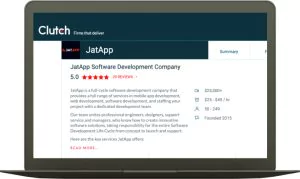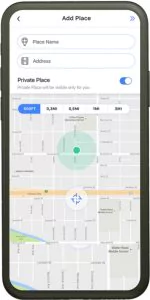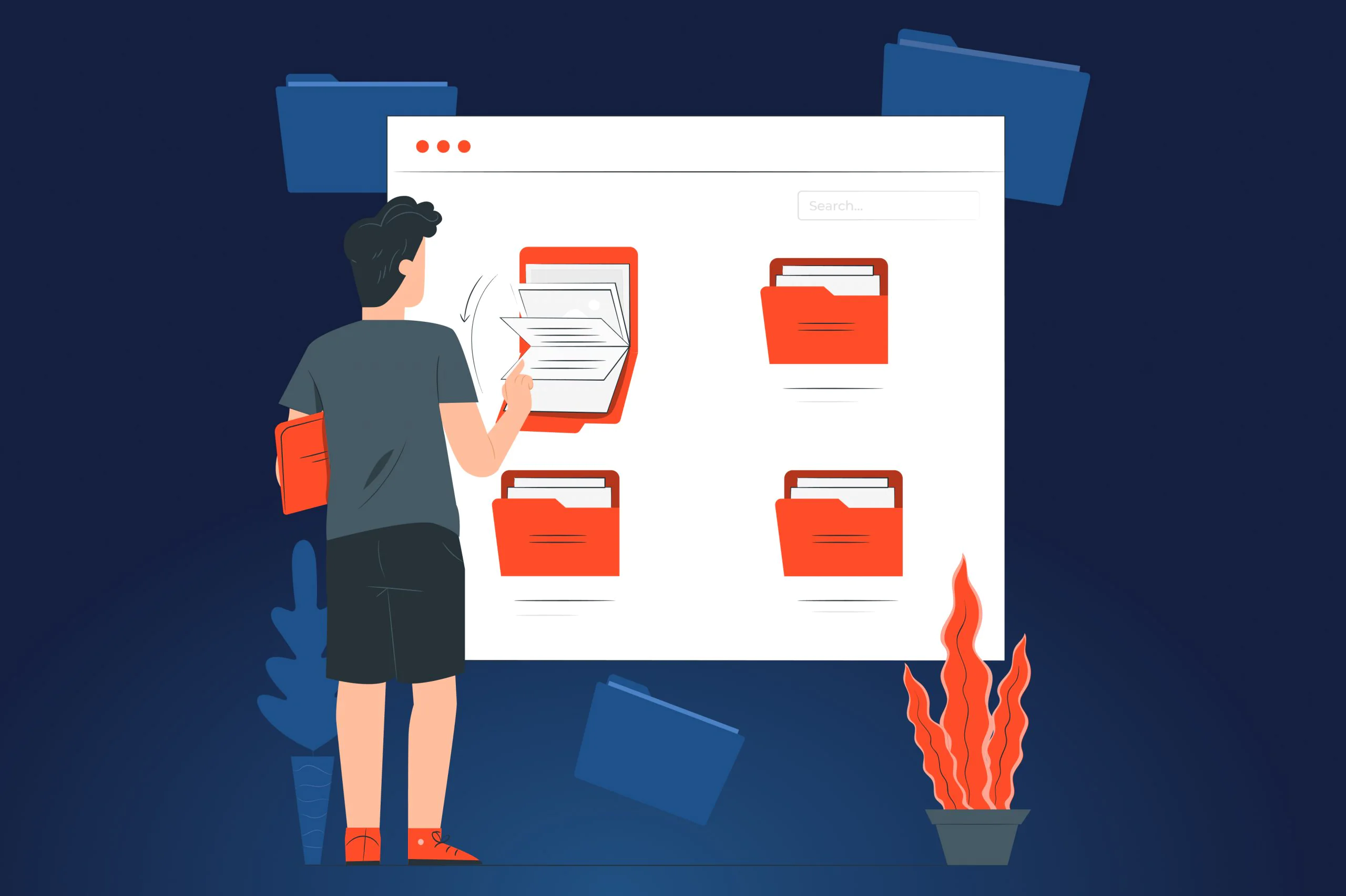With the spread of the Covid pandemic, skepticism about remote teams seems to vanish away, as more and more businesses opt for IT outsourcing. Recent studies support their choice claiming that teams’ performance doesn’t suffer when working remotely. Outsourcing software development allows companies to bring the best engineers on board, while also cutting down the project development costs.
Still, there are some serious challenges that businesses face when choosing outsourcing companies and cooperating with them. As a company that specializes in outsourcing services, we’d like to share with you some ideas of how to outsource app development that will help you succeed with your project.
Start with vendor’s assessment
When you make a decision to outsource app development, the first step is to do your own research and find decent software companies to choose from. Here are some ways to assess a potential partner:
-
Review the company’s portfolio
Checking the portfolio of a development agency is a good way to find out what challenges they successfully resolved in the past and what business benefits they brought to their partners. You may also check what technologies the software company is working with to understand whether they have enough expertise to complete your project.
JatApp case presented on its website
-
Learn about vendor’s experience in your industry
To find the right application development outsourcing company, you need to learn about its experience in your industry to make sure the vendor is able to handle processes and tasks you’re going to delegate. Even though the portfolio can give a valuable insight into the company’s experience in different sectors, it’s often the case that a business is not allowed to share all their projects due to the NDA restrictions. To evaluate the industry knowledge or expertise, you can ask the vendor directly about how many projects in your domain they’ve finished, as well as how complex those projects were.
-
Read reviews and check the rating
On reviews and ratings platforms like Clutch you can find what different clients say about vendors and decide whether you want to contact them for cooperation or not. Clients usually provide a lot of important details on such websites, like the project background, the major challenge, app development services delivered, as well as the final results. You can also take a closer look at the company’s ratings, which show scores in terms of the software quality, vendor’s ability to meet deadlines, development cost, and similar.
Vendor’s page on Clutch
Choose a fitting outsourcing contract
Based on the your project complexity and budget, vendors normally offer three types of contracts for the client to choose from: fixed-price, time and material, and cost plus contracts. Let’s clarify when it’s the best option to pick each of them.
Fixed-price contract
This type of contract means that a vendor is accountable for completing the project within the set budget. Fixed-price contracts are usually great for short-term projects with a fixed budget and limited scope of work.
Clients prefer this contract when rates, deliverables, and requirements can be predicted and specified beforehand. But even though outsource app development cost clarity associated with the fixed-price model may seem appealing at the beginning, this kind of certainty can take its toll. The vendor may recognize the risk they’re taking by charging more for their services than they would in case of fluid pricing.
Time and materials contract
The time and materials model presupposes that you have to pay for the number of hours team members have spent performing the project tasks, plus costs of materials. This kind of outsourcing contract allows you to make changes in the scope of work, requirements, materials, and so on.
At the planning stage of software development, it’s practically impossible to define how long the project will take or what the final product will look like. As for large-scale projects, it’s quite common that specifications will have to be adjusted due to new market demands. With the time and materials model, it’s easier to pivot if the requirements suddenly change.
Cost plus contract
The cost plus contract ensures that the client pays the software provider for all expenses, along with a prearranged percentage for profit. It also offers flexibility, allowing the client to change specifications.
It’s worth noting that the following type of contract is recommended when software quality presents a much greater concern than the price. The vendor has motivation to use the best materials and talent. Meanwhile, the vendor has to provide proof of all outsourcing app development costs, including direct and indirect expenses. Such contracts are especially helpful when it’s challenging to foresee the final costs of a large project or when there’s the lack of data to make a detailed estimate of costs because the product designs have not been finished yet.
Now it’s time to think about the engagement model
Once you determine what type of contract is the most suitable in your case, the next step is to look for an appropriate engagement model that will define the relationships between you and your vendor. Most common engagement models in software development are team augmentation, dedicated development team, and project-based outsourcing. Let’s take a look at case examples from JatApp practice to better understand in what situations engagement models are best suited.
Team augmentation
Team augmentation or staff augmentation is the expansion of your in-house development team by outsourcing tech experts, generally a few team members at once. Under this engagement model, you are “borrowing” workers from your outsourcing partner for however long you require them. You remain in charge of managing the daily team processes and retain the main responsibility for the project outcomes.
Some clients opt for team augmentation when they lack in-house talent and want to speed the project implementation. It’s also a viable solution when you need to add expertise to your in-house team quickly, without spending weeks or even months on staff recruiting.
JatApp case example
Cunio is a property management platform that allows tenants, service providers, and landlords to communicate with each other via a virtual pinboard and messaging service.
Cunio app functionality
-
Business problem
When a German startup, Cunio, outsourced app development to JatApp, they already had their communication platform developed. However, the product suffered from bugs that had to be resolved as quickly as possible. Apart from fixing errors, Cunio wanted us to build a notification microservice to meet a new market demand.
-
Solution
Cunio expanded their in-house team with JatApp’s quality assurance (QA) engineers who made sure that the communication platform works error-free. Also, our backend developers and project manager (PM) complemented the client’s tech team. The team built a notification system with the help of microservices architecture. Since the work has been delegated to JatApp engineers, Cunio’s in-house team could focus on other features, which helped the startup to meet deadlines as well as reduce time-to-market.
-
Benefits
Cunio has successfully completed the project within a few months. The company managed to easily add new functionality and quickly respond to the new market needs. The product after the code review and bug fixing met all customer’s acceptance criteria.
Cunio app functionality
Dedicated development team
A dedicated development team refers to an engagement model that provides you with a remote outsourcing team, which is fully devoted to your project. You’re free to choose software engineers based on your preferences and manage them as if they were your in-house tech talents. An outsourced PM organizes the team’s daily processes and workflows and reports all results back to you. The dedicated team model means that your software provider shares with you the responsibility for the final project outcomes.
The following model is used when you need the entire team committed to your project. Meanwhile, you remain actively engaged in the decision-making process related to the solution development. Also, if the mere thought of payrolls and administration tasks makes you feel sick, the dedicated team model is your go-to solution for application development outsourcing. Read our article about the dedicated team, if you want to know more about this engagement model.
JatApp case example
One of our Israeli clients aimed to build an automated cloud optimization platform. This cloud cost management solution was designed to help businesses save their money by tracking computing needs and resource usage.
-
Business problem
The Israeli startup sought to fix their unfinished solution and prepare it for the launch. They needed a team of outsourced app developers that have relevant expertise in their industry and skills to meet all project requirements.
-
Solution
The company turned to JatApp to recruit a dedicated team of three frontend developers to complete the project. Our software engineers used the latest version of AngularJS to address client’s needs.
-
Benefits
With the help of our dedicated team, the company released its flagship solution and managed to open a new office. After long-term cooperation under this engagement model, the startup founders decided to hire our talents as their in-house team members. Since these engineers already had experience in working with the company, they didn’t require any training, which allowed them to scale up our client’s business quickly. Despite all challenges caused by the pandemic, the platform increased their revenue by 600% and gathered $35M in funding.
Project-based outsourcing
Unlike team augmentation and dedicated team, project outsourcing means that the vendor has the full control over the software development team. In other words, this engagement model allows you to delegate your project to the software provider, from concept to release. In project-based outsourcing your vendor manages the app development process based on your specifications and is responsible for the final deliverables.
This type of outsourcing model is a good idea when the solution you develop is not your major product or when you have a short-term project with clearly defined requirements that aren’t likely to change. Some clients choose this model when they want a specific solution built without the any management hassle.
JatApp case example
Fameelee is one of our previous clients that created a location-based social network, letting more than 1 million users know their family members’ whereabouts.
Fameelee app functionality
-
Business problem
The company needed to build a user-friendly interface for people of different ages as well as create a module that functions on the background tracking users’ geolocations. The company was searching for outsourcing mobile development to build such a solution from scratch.
-
Solution
Project-based outsourcing was chosen for the initial minimum viable product (MVP) development. The outsourcing mobile development team consisted of our PM and six application developers who worked together to create the platform’s private and group chats, real-time location tracking, speed limit control, emergency alerts, and battery level tracking.
-
Benefits
The JatApp team successfully developed Android and iOS mobile apps, which stand out due to their 100% mapping accuracy, operational efficiency, and increased security. The product was an overwhelming success, reaching more than three million downloads on both platforms.
Fameelee app functionality
But wait, what about time zone differences?
The time zone differences may get in the way of effective application development outsourcing. When choosing an outsourcing destination, you should mind the difference in time, as, you know, when it’s morning at your office and late night at your vendor’s office, it might become a problem. Ideally, your in-house and outsourced teams should have efficient management to work productively despite time zone barriers.
An example of possible time zone differences
Find time zone overlap to communicate with your team
Finding a time zone overlap is important for keeping the lines of communication open with your outsourced team members. Synchronous communication allows app development teams to receive immediate feedback from colleagues as well as resolve problems as soon as they pop up.
When scheduling your meetings, you need to pay special attention to time differences to avoid any confusion between remote teams. Every worker should mention time zones (UTC) when arranging calls and meetings. And instead of writing, for instance “5 PM”, it’s preferable to specify the time saying “7 PM EST” for better clarity.
Use platforms for video conferences, like Google Meet or Zoom, from day one. Communication by means of video conferencing tools helps to make sure that everyone on the team is on the same page. Ask every participant to leave their camera and microphone on, so that they stay actively involved in the project discussions rather than get distracted by preparing another cup of coffee.
Video conferencing with Google Meet
Make the most out of asynchronous communication
Still, instead of attempting to get every team member in the same conference room, you should admit that teams have different schedules, which is why the use of different online tools may come in handy. Task management tools, emails, and messenger apps are all good examples of communication solutions that don’t require workers’ real-time presence.
At JatApp, we use a range of asynchronous solutions, like Confluence for detailed documentation, Jira for task management, and Figma to collaboratively design the product. Such an approach allows workers not to waste their time, waiting for a remote team member to respond to a request.
Figma app functionality
How much does it cost to outsource app development?
To calculate the cost of software development, you need to know the developer’s rate per hour and the project timeline. The coder’s rates will heavily depend on their location and their level of expertise. Notably, countries with advanced economies typically have higher rates since the costs of living are also higher.
The challenges arise, however, when there’s a need to set rough due dates for each project feature. Software development is not like building a house, as there are many obstacles along the journey. While building a house is a standardized procedure, creating new solutions requires you to constantly adapt to changing market demands.
Thus, PMs, developers, designers, and QA engineers should make their estimates for each feature, taking into account all factors that may either delay or speed up the project. Simply put, the team needs to calculate how many hours the project will take in the realistic, optimistic, and pessimistic scenarios. You can take a look at the picture below to better understand how cost calculations are made in software development.
An example of software development estimate
Last but not least, what to consider when writing a Request for Proposal (RFP)?
An RFP refers to a document that is created at the presale phase and contains description of a major business idea of the product. Most of the time it’s clients who are responsible for writing RFPs. Before making RFP, it’s important to ask yourself the following questions:
-
Analysis of your project business idea
- Are there product alternatives on the market?
- Is there something that makes my product stand out from competitors?
- What will change in the industry after the project release?
-
Analysis of your stakeholders
- What are the goals and expectations of each stakeholder?
- What is their interest in solving the problem that the project tackles?
- What suggestions could you make to your stakeholders for the project to be successful?
-
Analysis of the ways to satisfy your business needs
- What can you do to solve current business problems?
- What results do you expect to achieve after the project release?
Bottom line
Abovementioned recommendations can make the process of outsourcing an app seamless and stress-free for you. A reliable software provider will assist you in turning your project idea into an advanced tech solution that can revolutionize your industry.
JatApp has been recognized as one of the top 1,000 B2B IT outsourcing companies in the world according to Clutch. We’re committed to delivering high-quality software that helps clients achieve their ambitious goals. The statistics on our company speaks for itself.
So, if you’re interested in cooperating with us, don’t hesitate to contact us for further details.





















